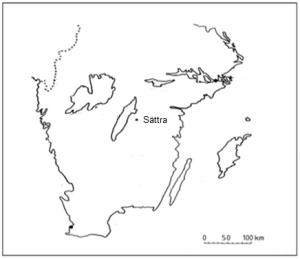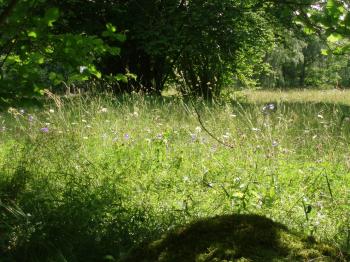Mowing trial
Study site, experimental design and sampling

The effect of different mowing techniques on the grasslands vegetation composition was studied in a part of the nature reserve Sättra ängar, south-eastern Sweden. This grassland has been mowed since the 17th century. The trial was set up in 2001 with the aim to compare three different mowing techniques: i) mowing using a knife mower, ii) mowing using a grass trimmer at 5 cm height (Grass trimmer normal) and iii) mowing using a grass trimmer at 0 cm cutting height (Grass trimmer low). Each treatment was applied to five 2 m x 4 m treatment plots and mowing took place in late July each year. All cut material was removed and followed by grazing. Survey of the vegetation took place in 2001-2005, 2008 and 2012. During the survey, the presence of vascular plants was noted 40 permanent 10 cm x 10 cm squares per treatment plot.
Classification of plants and statistical analysis
To show the effect of the treatments on the grasslands vegetation, the species recorded was classified as grassland indicators according to several different classification systems. The species were classified as indicators of i) good management, ii) excess nitrogen, or iii) lack of management.
As the survey method and number of subplots differed between years and sites, meta-analysis was used to overcome these differences. To compare the effect of the different mowing techniques, log odds ratio-analysis was used, which compares the odds of a species being an indicator species with the odds of it being a non-indicator species, between the treatments. The treatment with higher odds of finding indicators of good management and lower odds of finding indicators of excess nitrogen and lack of management would be considered as having a positive effect on the vegetation composition.

Responsible for this page:
Director of undergraduate studies Biology
Last updated:
05/20/13
